Week 16 Assignment
SYSTEM INTAGRATION
This weeks assigmenat was to Design and document the system integration for your final project
Structural Integrity:
- Robust top-bottom structure providing foundational support.
- Designed for stability and balance during combat maneuvers.
Weapon System:
- Horizontal spinner weapon assembly for offensive capabilities.
- Integrated weapon pulley system for rapid rotation and impact.
Protective Shell:
- Outer armor designed for durability and protection.
- Enhances resilience against opponent attacks.
Aesthetic Design:
- Sleek and aerodynamic shell design.
- Combines functionality with visual appeal.
Engineering and Material:
- Carefully engineered components for durability and performance.
- Uses advanced materials for strength and impact resistance.
Agility and Maneuverability:
- Optimized for agility and quick response in combat scenarios.
- Enables strategic movement and offensive positioning.
SHREDZILA's Design
SHREDZILA's design consists of three main components: the top-bottom structure, the weapon assembly, and the shell.
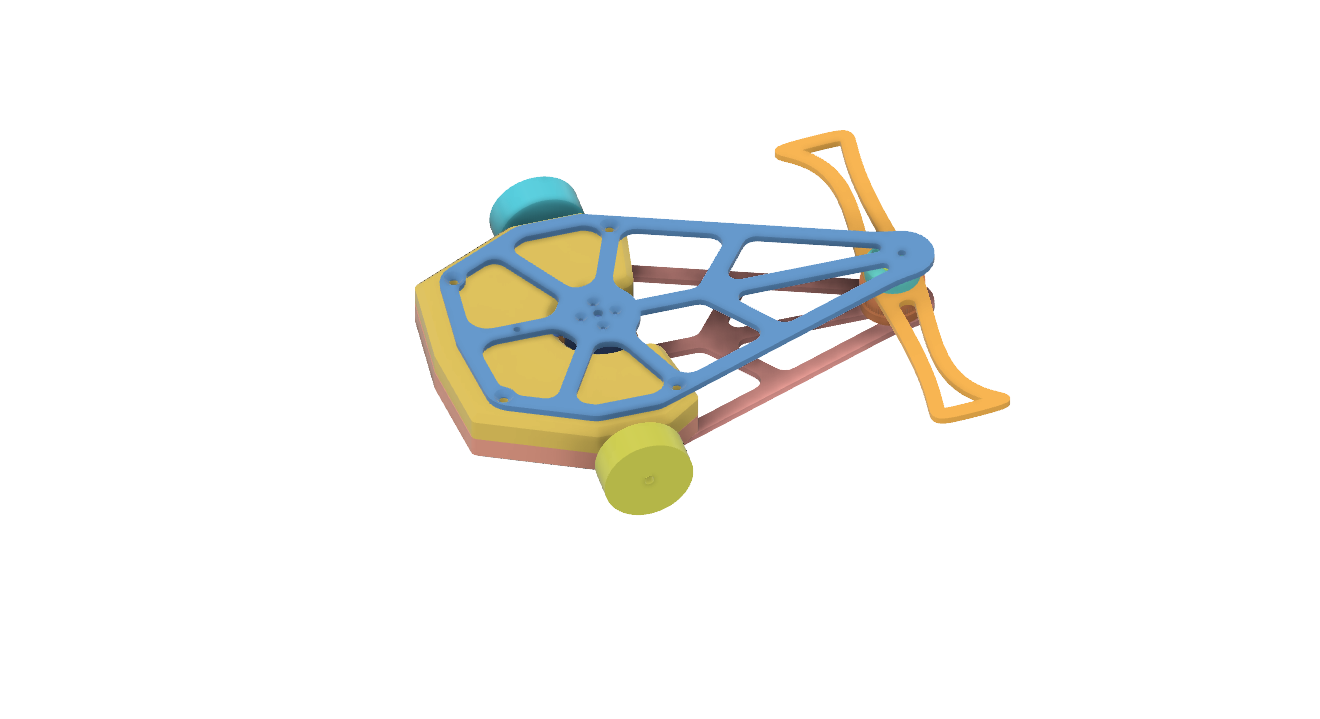
Top-Bottom Structure:
The top-bottom structure forms the backbone of SHREDZILA, providing support and stability. These components extend from the shell, ensuring structural integrity and balance during combat. Carefully engineered for durability and weight distribution, the top-bottom structure serves as the foundation for mounting the weapon assembly and other essential components. At the end of each segment of this structure, the weapon pulley and weapon are securely mounted, enabling precise control and powerful strikes.
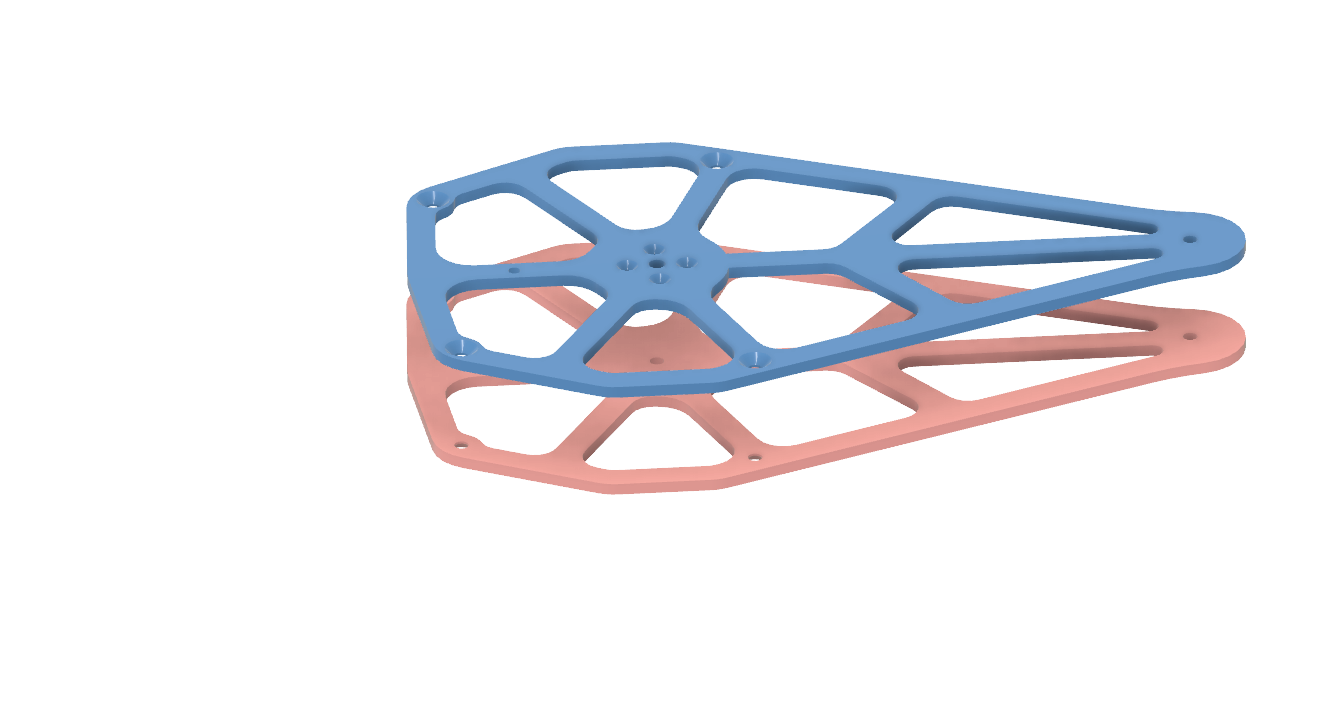
Weapon Assembly:
Positioned at the end of each top-bottom segment, the weapon assembly is the primary offensive component of SHREDZILA. Inspired by Tombstone, the horizontal spinner weapon is designed to deliver devastating blows to opponents. The weapon pulley, integrated into the top-bottom structure, provides rotational power to the weapon, enabling rapid spinning and maximum damage upon impact.
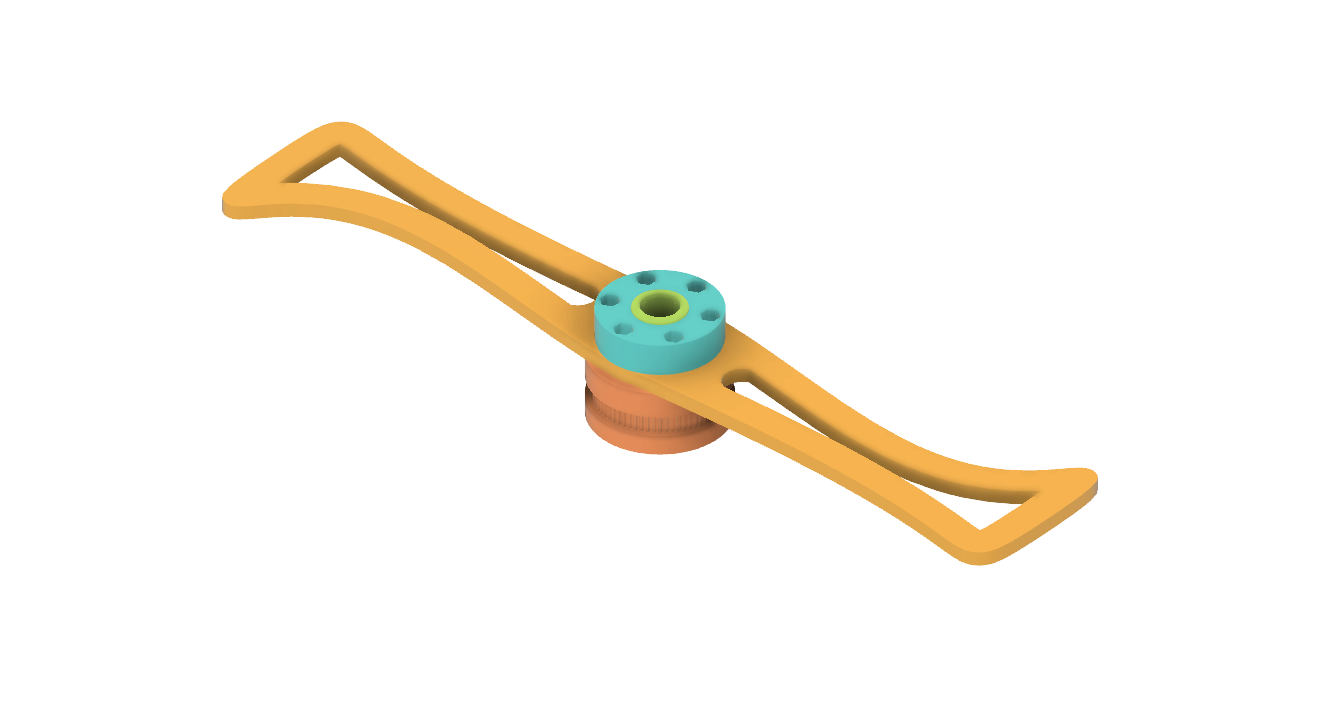
Shell:
The shell encompasses SHREDZILA's top-bottom structure and serves as its outer armor. Designed for aerodynamics and durability, the shell provides protection against enemy attacks while enhancing the robot's overall aesthetics. Integrated seamlessly with the top-bottom structure, the shell contributes to SHREDZILA's sleek appearance while maintaining its resilience in combat.

SHREDZILA PARTS
THIS is the basic plan of shredizils parts will look as they reach final assembly
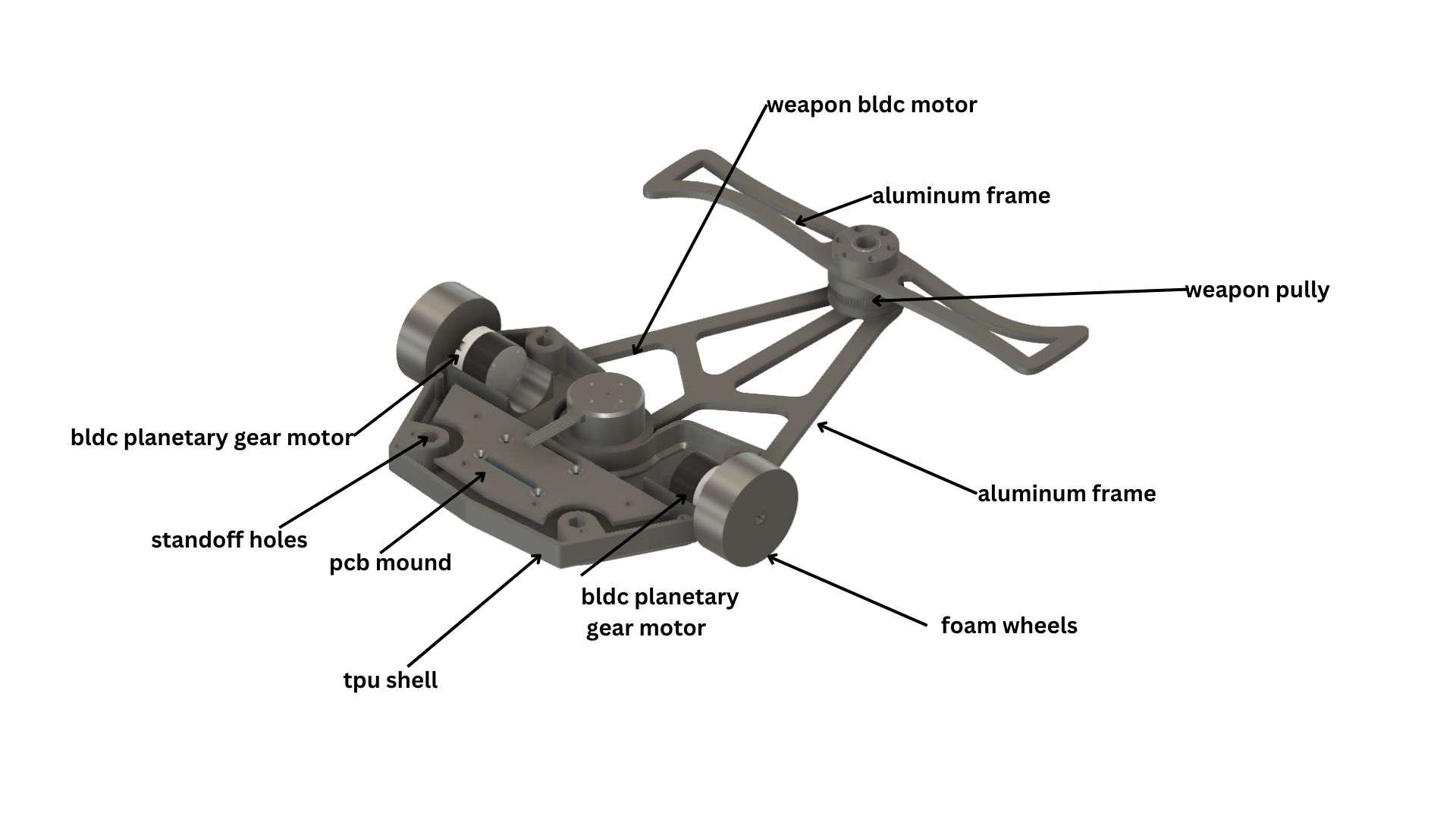
you can see and download the cad file from here
SHREDZILA Fusion 360 fileManufacturing Methods for SHREDZILA
Metal Parts Manufacturing:
Water Jet Cutting:
Process: High-pressure water jet cutting is used to precisely cut metal sheets.
Advantages: Allows for intricate shapes and clean cuts without heat-affected zones.
Application: Used for manufacturing structural components of the robot.
Foam Wheel Arc Cutting:
Water Jet Cutting:
Process: High-pressure water jets are used to cut foam materials.
Advantages: Provides accurate cutting with minimal material wastage.
Application: Used for shaping foam wheels to desired dimensions for the robot.
PCB Manufacturing:
PCB Milling Machine:
Process: PCB milling machine is used to carve out circuit patterns from copper-clad boards.
Advantages: Enables rapid prototyping and customization of circuit designs.
Application: Used to manufacture electronic circuit boards for controlling the robot.
PCB Assembly:
Soldering:
Process: Electronic components are soldered onto the PCB according to the circuit design.
Advantages: Ensures reliable electrical connections and functionality of the circuit.
Application: Integrates electronic components into the PCBs manufactured using the milling machine.
Shell Manufacturing:
3D Printing (Material: TPU):
Process: Utilizes 3D printing technology with TPU (Thermoplastic Polyurethane) material.
Advantages: Allows for complex geometries and customization, suitable for prototypes.
Application: Produces the outer shell of the robot, combining durability with design flexibility.
Base for Showcase Manufacturing:
Protrack Milling Machine:
Process: CNC milling machine (Protrack) is used to mill the base structure.
Advantages: Precision milling for creating a stable and functional base.
Application: Creates the base structure used for showcasing the robot, ensuring stability and aesthetic presentation.
SHREDZILA Electronics Bill of Materials (BOM)
| Item | Quantity | Description | Price (Estimate) | Source |
|---|---|---|---|---|
| Switch | 2 | Toggle Switch (SMD) | ₹5 | fablab |
| ESP32 Module | 1 | Microcontroller Development Board | ₹230 | fablab |
| Resistors (1208 package, as required) | Resistors for ESP32 Minimum Circuit | ₹2 | fablab | |
| 5v Voltage Regulator | 1 | LM7805 Voltage Regulator | ₹12 | fablab |
| Diode (1N4007) | 1 | Diode (1N4007) | ₹5 | fablab |
| Electrolytic Capacitor (100uF, 25V) | 1 | Electrolytic Capacitor (100uF, 25V) | ₹5 | fablab |
| Ceramic Capacitors (0.1uF) | 1 | Ceramic Capacitors (0.1uF) | ₹5 | fablab |
| Resistor (220 ohms) | 1 | Resistor (220 ohms) | ₹.50 | fablab |
| 3.3v Voltage Regulator | 1 | LM317 Voltage Regulator | ₹20 | fablab |
| Resistors (220 ohms, 1k ohm) | Resistors for LM317 Circuit | ₹.50 | fablab | |
| Electrolytic Capacitor (10uF, 25V) | 1 | Electrolytic Capacitor (10uF, 25V) | ₹5 | fablab |
| Ceramic Capacitors (0.1uF) | 1 | Ceramic Capacitors (0.1uF) | ₹3 | fablab |
| LED for Power Indicator | 1 | SMD LED (1208 package) | ₹1.5 | fablab |
| 20A ESC | 1 | Electronic Speed Controller (ESC) - 20A | ₹400 | fablab |
| 40A ESC | 1 | Electronic Speed Controller (ESC) - 40A | ₹1000 | fablab |
| 2212 BLDC Motor | 2 | Brushless DC Motor - 2212 | ₹450 | fablab |
| 3S LiPo Battery | 1 | Lithium Polymer Battery - 3S, 30C | ₹1800 | fablab |
| 3-Pin 2.54mm Male Berg Strip | 1 | 3-Pin Male Berg Strip (2.54mm pitch) | ₹5 | fablab |
| Terminal Connectors | 1 | Terminal Connectors (as required) | ₹5 | fablab |
SHREDZILA Bill of Materials (Mechanical)
| Item | Quantity | Description | Price (Estimate) | Source |
|---|---|---|---|---|
| Screws | ||||
| 6mm CSK Screws (12mm length) | 8 | Countersunk screws | fablab | |
| 3mm Screws (12mm length) | 4 | Standard screws | fablab | |
| 3mm Screws (40mm length) | 6 | Standard screws | fablab | |
| 3mm Lock Nuts | 6 | Locking nuts | fablab | |
| 6mm Hex Standoff (12mm length) | 6 | Hexagonal standoffs | fablab | |
| 6mm Button Head Screws (15mm length) | 2 | Button head screws | fablab | |
| 3mm CSK Screws (12mm length) | 4 | Countersunk screws | fablab | |
| 3mm Screws (25mm length) | 2 | Standard screws | fablab | |
| Stock Materials | ||||
| 6063 Aluminum Plate (225mm x 365mm x 5mm) | 2 | Aluminum plate | fablab | |
| HCHCR Plate (375mm x 125mm x 5mm) | 1 | High carbon high chromium plate | ₹600 | Local hardware store |
| Additional Components | ||||
| TPU Filament (1kg) | 1 | Flexible filament for 3D printing | fablab | |
| Drawn Cup Needle Roller Bearing, HK1212 | 3 | Needle roller bearings | ₹150 | Local hardware store |
| Planetary Gear DC Motor 12V | 1 | 12V DC motor with planetary gears | ₹1200 | online marketplaces robu.in |
PROJECT SHEDULE
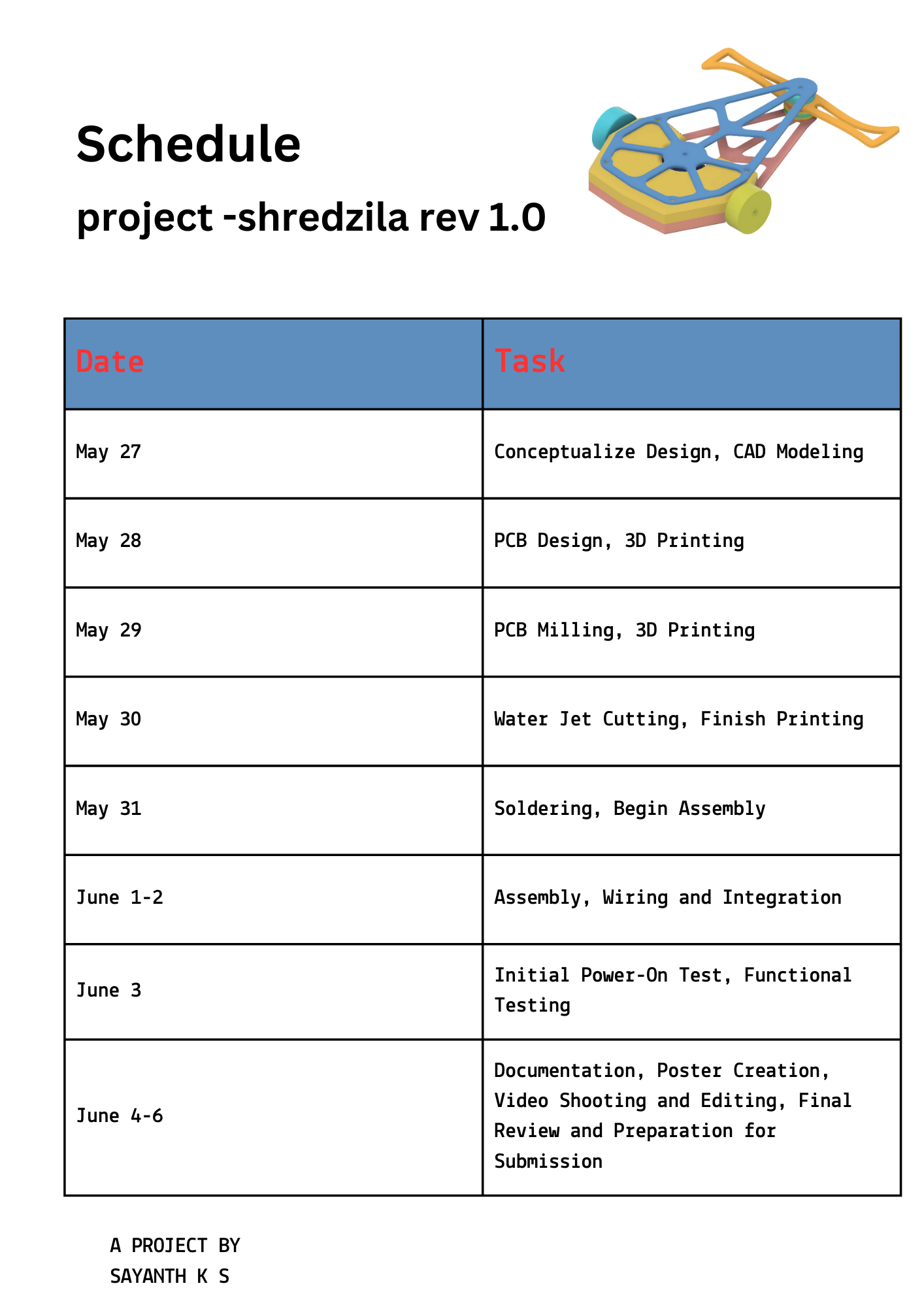
BLOCKDIAGRAM
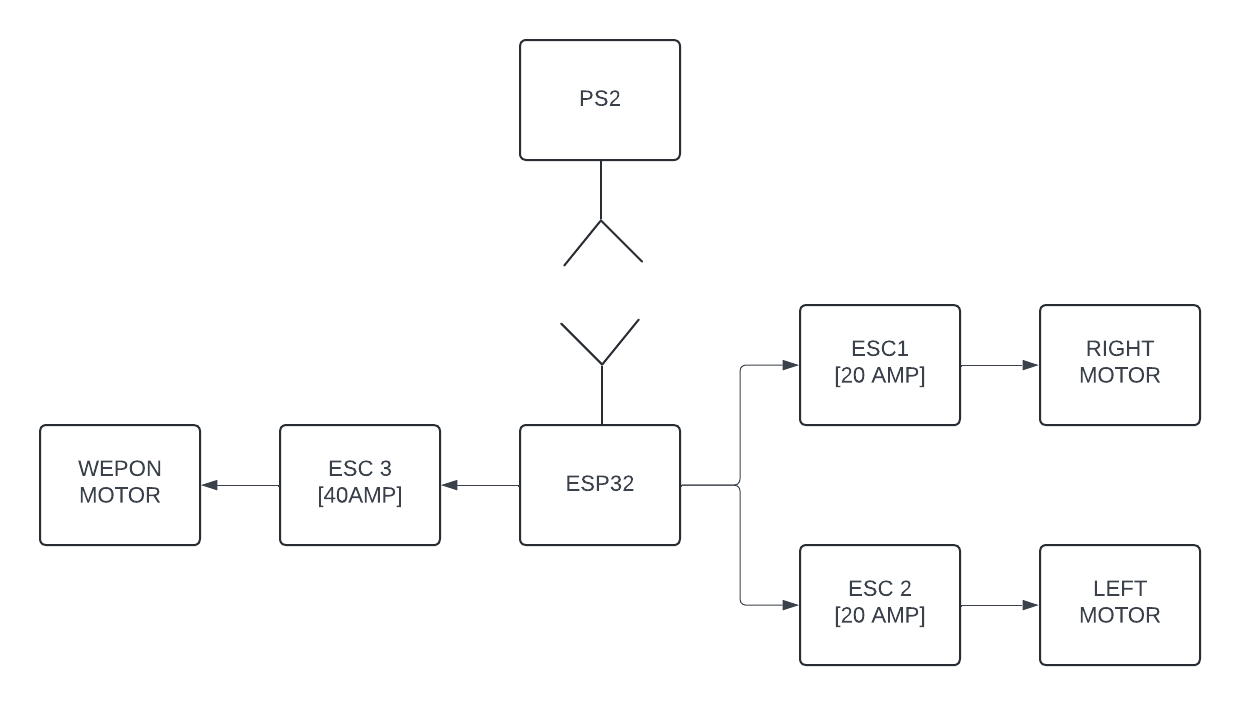
Components Overview and Functions
.png)
ESP32 Module (Microcontroller Development Board)
Function: The ESP32 is a powerful microcontroller with built-in WiFi and Bluetooth capabilities. It serves as the main control unit for the project, executing the logic to control other components.
Communication: It uses ESP-NOW for wireless communication with devices like the PS2 controller.
20A ESC (Electronic Speed Controller) and 40A ESC
Function: ESCs are used to control the speed and direction of brushless DC motors. They take a signal from the microcontroller and convert it into a form that can drive the motors.
Communication: ESCs typically receive a Pulse Width Modulation (PWM) signal from the microcontroller. The width of the pulse determines the speed and direction of the motor.
2212 BLDC Motor
Function: Brushless DC motors (BLDC) are used for high efficiency and performance in applications like drones or RC vehicles. The 2212 specification refers to the motor’s size and power rating.
Communication: BLDC motors are controlled by the ESC, which in turn is controlled by the PWM signal from the microcontroller.
3S LiPo Battery (Lithium Polymer Battery)
Function: Provides the necessary power to the ESCs and, subsequently, the motors. The "3S" designation means the battery has three cells in series, providing a nominal voltage of 11.1V.
Communication: Directly powers the ESCs and other components needing stable voltage.
Communication and Control
PWM (Pulse Width Modulation)
Usage: The microcontroller generates PWM signals to control the ESCs. The width of each pulse controls the power output to the motors, hence controlling their speed.
Flow: ESP32 -> PWM Signal -> ESC -> Motor.
ESP-NOW Communication
Usage: ESP-NOW is a low-power, efficient communication protocol used by ESP32 devices for peer-to-peer communication. It is ideal for controlling the system wirelessly using a PS2 controller.
Flow: PS2 Controller -> ESP-NOW -> ESP32.
Typical Setup and Functionality
PS2 Controller
Acts as a remote control device. Commands from the PS2 controller are sent wirelessly to the ESP32 using ESP-NOW.
ESP32 Microcontroller
Receives commands from the PS2 controller via ESP-NOW. It processes these commands and generates appropriate PWM signals.
ESCs (20A and 40A)
Receive PWM signals from the ESP32. The ESCs regulate the power sent to the motors based on the PWM signal, controlling their speed and direction.
Motors (2212 BLDC)
Execute the physical movement as controlled by the ESCs. They are powered by the LiPo battery and regulated by the ESCs' instructions.
Example Scenario
Initialization
Power on the system with the 3S LiPo battery.
The ESP32 initializes and establishes ESP-NOW communication with the PS2 controller.
Receiving Commands
The user inputs commands using the PS2 controller.
Commands are sent to the ESP32 via ESP-NOW.
Processing Commands
The ESP32 processes the commands and determines the required motor speeds and directions.
The ESP32 generates corresponding PWM signals for the ESCs.
Controlling Motors
The ESCs receive the PWM signals and adjust the voltage and current supplied to the BLDC motors.
The motors spin at the desired speed and direction, as dictated by the user input via the PS2 controller.